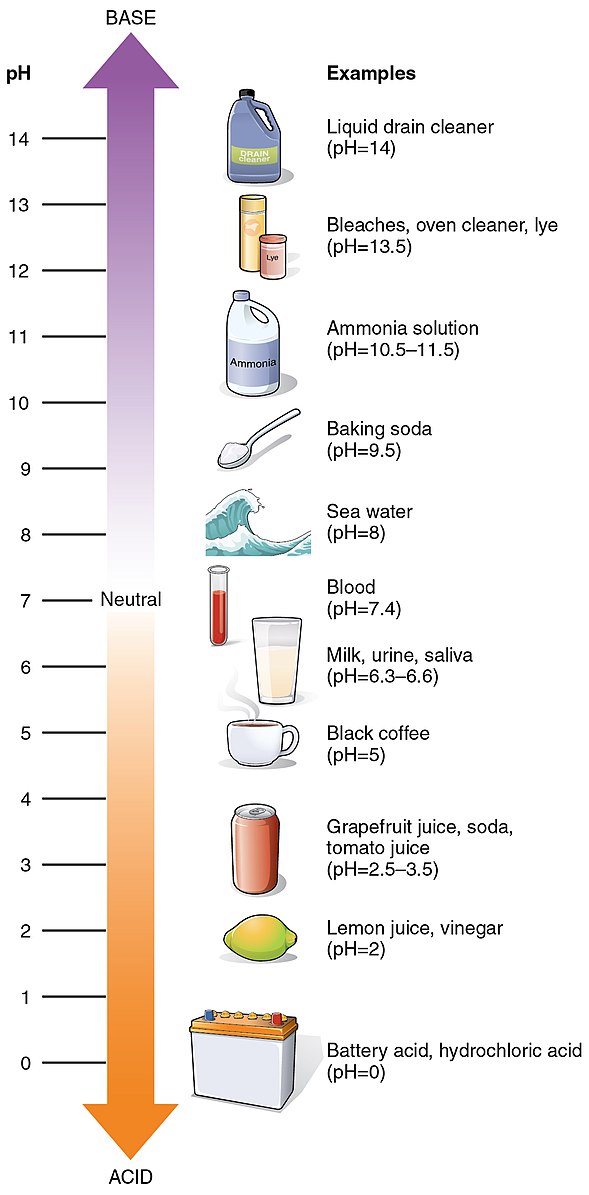The pH of acetonitrile in water is a complex topic that requires a deep understanding of the different scales of acidity in these two solvents. Acetonitrile, a polar aprotic solvent, has a pH scale that is distinct from that of water, making it necessary to use a conversion parameter to compare the pH values between the two solvents.
Understanding the pH Scale in Acetonitrile-Water Mixtures
When acetonitrile is mixed with water, the pH values of primary buffer solutions in acetonitrile-water mixtures with varying percentages of acetonitrile (10, 30, 40, 50, and 70%) have been measured and reported. These measurements provide valuable insights into the pH range of these mixtures:
| Acetonitrile/Water Mixture | pH Value |
|---|---|
| 95/5 with 0.1% formic acid | 3.9 |
| 70/30 | 5.9 |
It is important to note that the pH range in acetonitrile is different from that in water, and it is advisable to use a pH meter calibrated in acetonitrile to measure the pH of an acidified acetonitrile solution accurately.
Handling Acetonitrile-Water Mixtures
 Image source: OpenStax College
Image source: OpenStax College
When dealing with acetonitrile-water mixtures, it is crucial to consider the solubility and reactivity of any contaminants, chemicals, or substances present in the mixture. Certain substances, such as acids, bases, reducing agents, and oxidizing agents, are incompatible with acetonitrile and can cause contamination or other issues.
To ensure accurate pH measurements and prevent contamination, it is essential to handle and store acetonitrile-water mixtures properly. This includes:
- Proper storage conditions: Acetonitrile-water mixtures should be stored in a cool, dry place, away from direct sunlight and heat sources.
- Contamination prevention: Avoid introducing any foreign substances or materials into the acetonitrile-water mixture, as this can affect the pH and other properties.
- Appropriate measurement techniques: Use a pH meter calibrated in acetonitrile to measure the pH of the mixture accurately.
Conversion Between pH Scales
As mentioned earlier, the pH scale in acetonitrile is different from the pH scale in water. To convert pH values between the two solvents, a conversion parameter can be used. A 2007 study has reported on the development of a “δ Conversion Parameter” that allows for the conversion of pH values between the acetonitrile and water scales.
By using this conversion parameter, researchers and scientists can accurately compare and analyze pH data across different solvent systems, including acetonitrile-water mixtures.
Conclusion
The pH of acetonitrile in water is a complex topic that requires a deep understanding of the different scales of acidity in these two solvents. Proper handling, storage, and measurement techniques are crucial to ensure accurate pH values and prevent contamination. Additionally, the use of a conversion parameter can help researchers and scientists compare pH data across different solvent systems, including acetonitrile-water mixtures.
References:
- A Universal pH Scale for all Phases – Excellence in Analytical Chemistry, https://info.ut.ee/en/each/a-universal-ph-scale-for-all-phases
- δ Conversion Parameter between pH Scales ( and ) in Acetonitrile/Water, https://pubs.acs.org/doi/10.1021/ac062372h
- pH measurements in acetonitrile-water mixtures by use of primary buffer solutions, https://www.sciencedirect.com/science/article/pii/073170859180117R/pdf?md5=52f56dc7f533e31fedd382e9ef47c73a&pid=1-s2.0-073170859180117R-main.pdf
- 95/5 Acetonitrile/Water with 0.1% formic acid, https://lab.honeywell.com/shop/acetonitrile-95-and-water-5-with-0-1-formic-acid-lc599
- Is there any way to measure the pH of an acidified Acetonitrile solution, https://www.researchgate.net/post/Is_there_any_way_to_measure_the_pH_of_an_acidified_Acetonitrile_solution
- 70/30 Acetonitrile/Water, https://lab.honeywell.com/shop/acetonitrile-70-and-water-30-468
